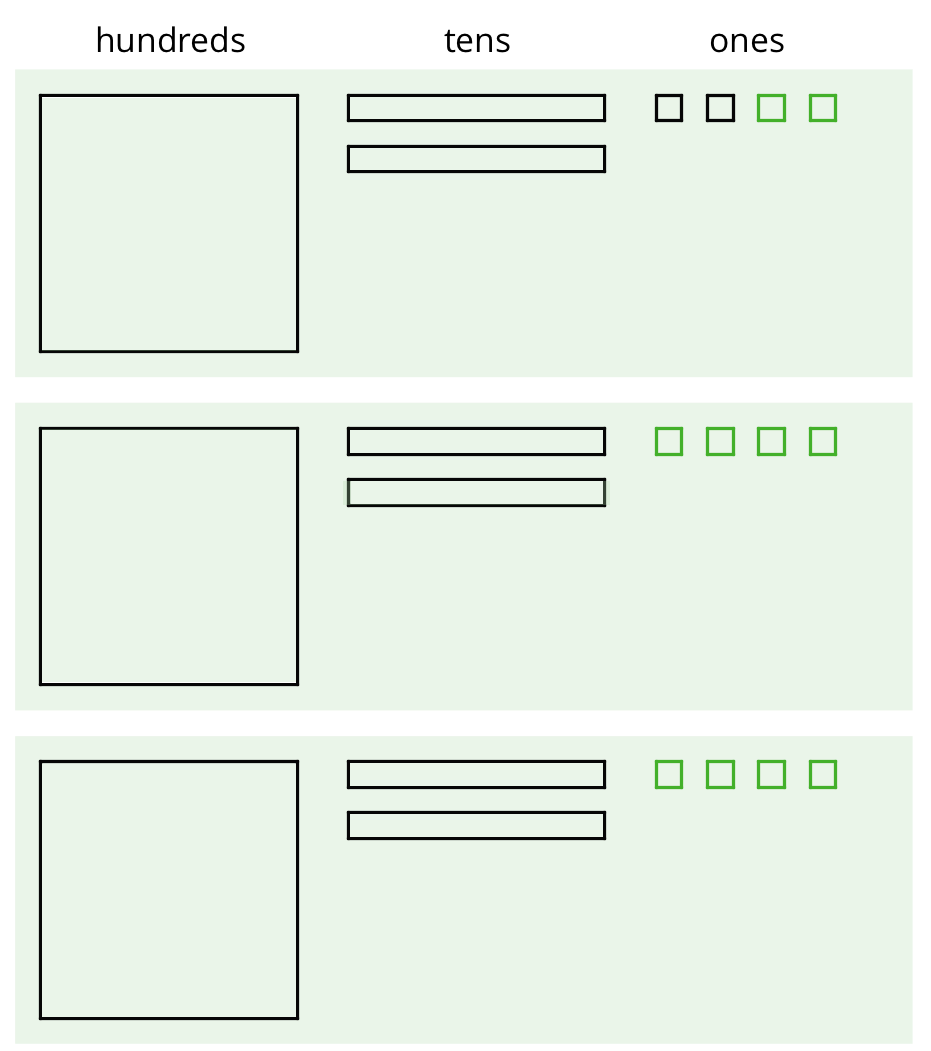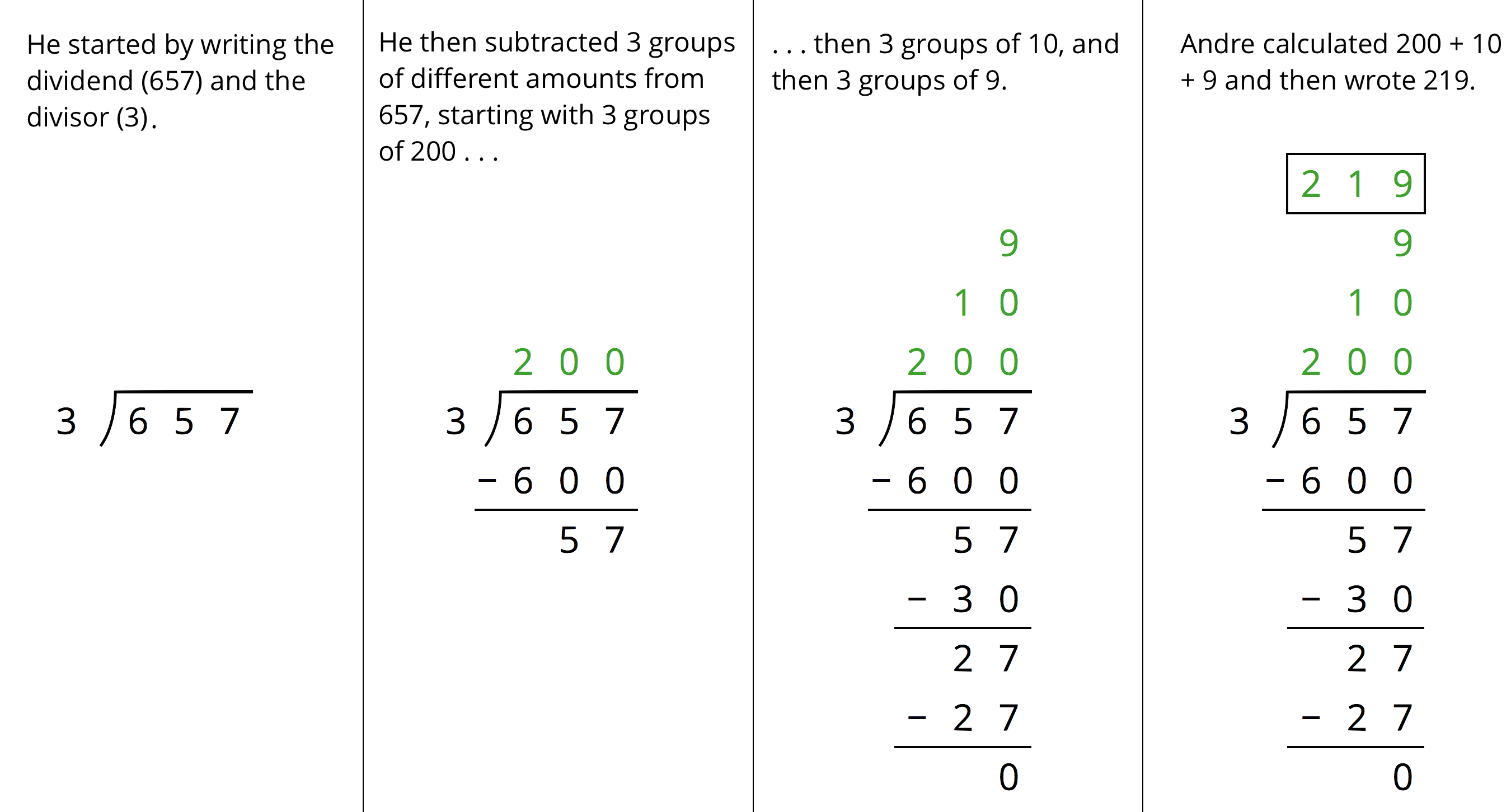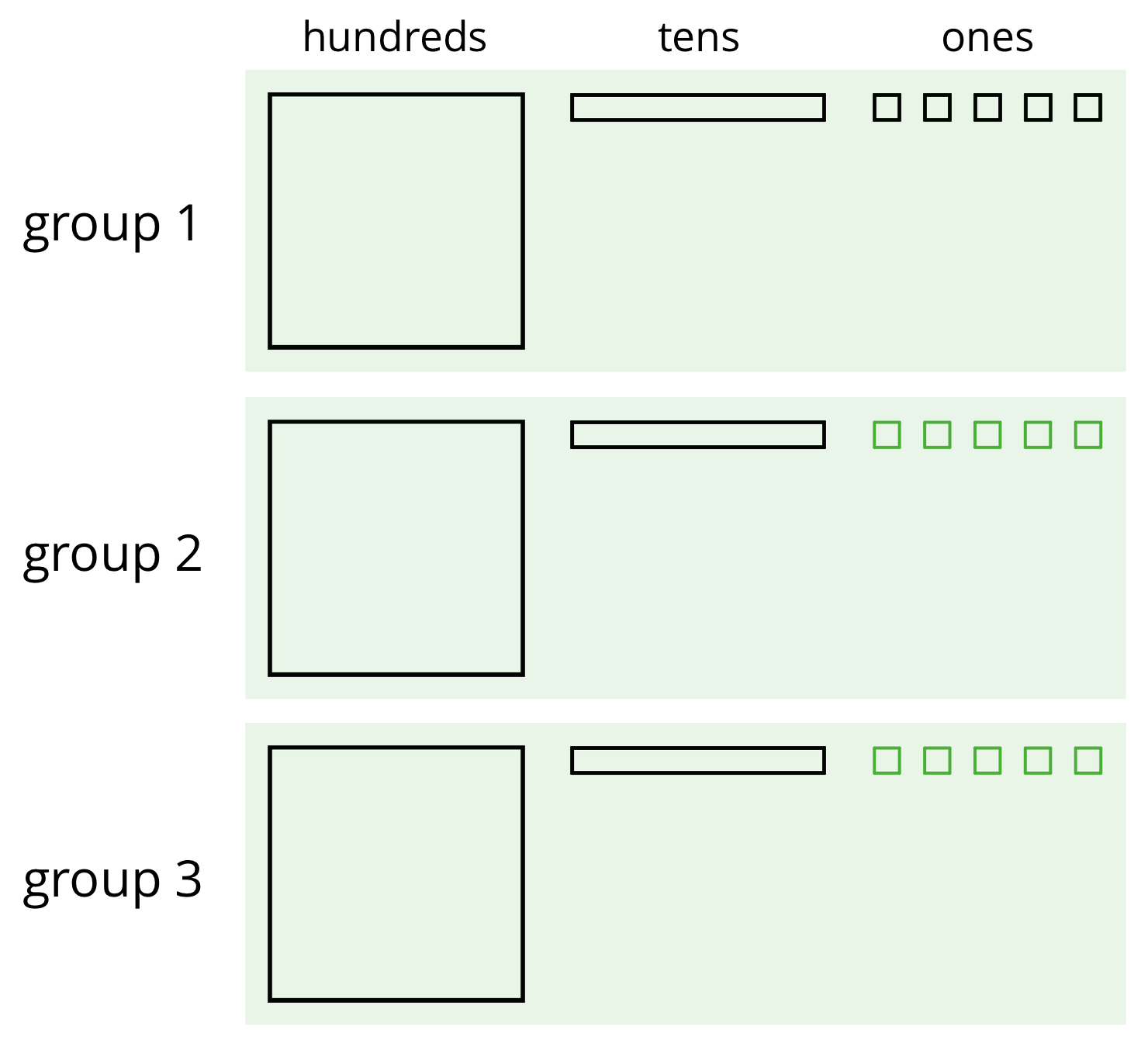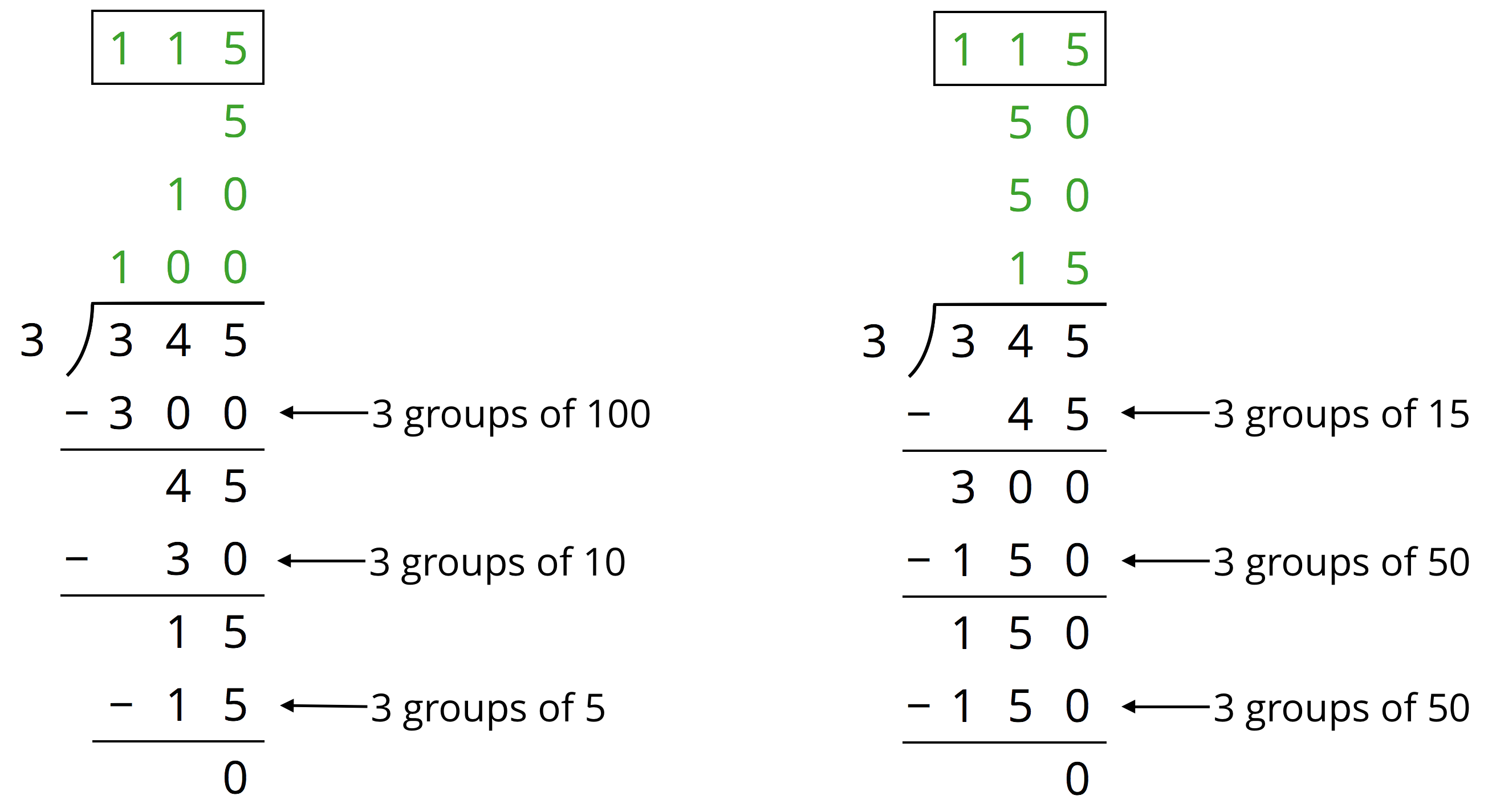Lesson 9
Using the Partial Quotients Method
Let’s divide whole numbers.
9.1: Using Base-Ten Diagrams to Calculate Quotients
Elena used base-ten diagrams to find \(372 \div 3\). She started by representing 372.

She made 3 groups, each with 1 hundred. Then, she put the tens and ones in each of the 3 groups. Here is her diagram for \(372 \div 3\).

- Elena’s diagram for 372 has 7 tens. The one for \(372 \div 3\) has only 6 tens. Why?
- Where did the extra ones (small squares) come from?
9.2: Using the Partial Quotients Method to Calculate Quotients
-
Andre calculated \(657 \div 3\) using a method that was different from Elena’s.

- Andre subtracted 600 from 657. What does the 600 represent?
- Andre wrote 10 above the 200, and then subtracted 30 from 57. How is the 30 related to the 10?
- What do the numbers 200, 10, and 9 represent?
- What is the meaning of the 0 at the bottom of Andre’s work?
-
How might Andre calculate \(896 \div 4\)? Explain or show your reasoning.
9.3: What’s the Quotient?
- Find the quotient of \(1,\!332 \div 9\) using one of the methods you have seen so far. Show your reasoning.
-
Find each quotient and show your reasoning. Use the partial quotients method at least once.
- \(1,\!115 \div 5\)
- \(665 \div 7\)
- \(432 \div 16\)
Summary
We can find the quotient \(345\div 3\) in different ways.
One way is to use a base-ten diagram to represent the hundreds, tens, and ones and to create equal-sized groups.

We can think of the division by 3 as splitting up 345 into 3 equal groups.

Each group has 1 hundred, 1 ten, and 5 ones, so \(345 \div 3 = 115\). Notice that in order to split 345 into 3 equal groups, one of the tens had to be unbundled or decomposed into 10 ones.
Another way to divide 345 by 3 is by using the partial quotients method, in which we keep subtracting 3 groups of some amount from 345.

- In the calculation on the left, first we subtract 3 groups of 100, then 3 groups of 10, and then 3 groups of 5. Adding up the partial quotients (\(100+10+5\)) gives us 115.
- The calculation on the right shows a different amount per group subtracted each time (3 groups of 15, 3 groups of 50, and 3 more groups of 50), but the total amount in each of the 3 groups is still 115. There are other ways of calculating \(345 \div 3\) using the partial quotients method.
Both the base-ten diagrams and partial quotients methods are effective. If, however, the dividend and divisor are large, as in \(1,\!248 \div 26\), then the base-ten diagrams will be time-consuming.